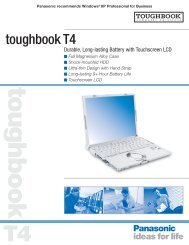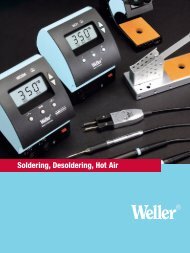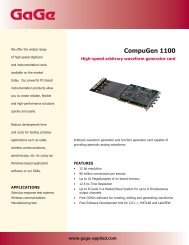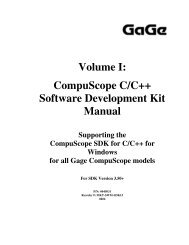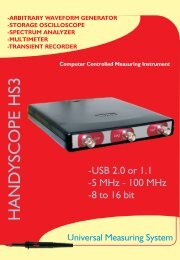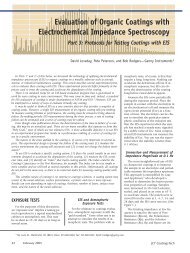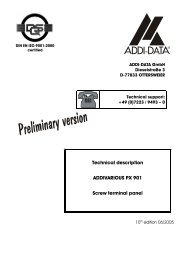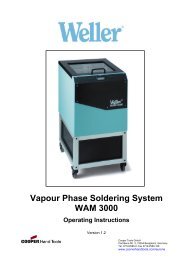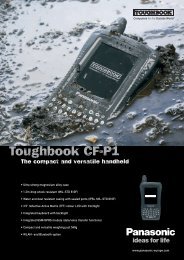CompuScope SDK for L.. - Egmont Instruments
CompuScope SDK for L.. - Egmont Instruments
CompuScope SDK for L.. - Egmont Instruments
- No tags were found...
Create successful ePaper yourself
Turn your PDF publications into a flip-book with our unique Google optimized e-Paper software.
Representative Acquisition SequencesThe diagram below illustrates important representative acquisition sequences that arepresented <strong>for</strong> key acquisition requirements. The first sequence shows a generalizedacquisition with data collected during all acquisitions phases illustrated: overwritten pretriggerdata, available pre-trigger data, data acquired during the Trigger Delay and posttriggerdata.The second sequence shows an acquisition using a trigger delay where the SegmentSize is made equal to the Depth. This acquisition sequence is useful <strong>for</strong> applicationswhere the signal region of interest occurs long after the trigger event, as is often the case<strong>for</strong> Time Domain Reflectometry methods such as ultrasonics, radar and lidar.The third sequence shows the acquisition in the case of a rapidly occurring trigger. In thiscase, the Segment size has been set bigger than the Depth. However, the trigger eventoccurred so rapidly after the start of the acquisitions that there was insufficient time to fillall of the memory allotted <strong>for</strong> pre-trigger data, which is (Segment Size – Depth) samples.Consequently, there is less preceding valid trigger data than the maximum possibleamount of pre-trigger data. If transfer of invalid data were requested, the driver wouldreturn an actual start address that is equal to the address of the first valid pre-triggerpoint. More pre-trigger data could have been acquired using Trigger Holdoff at theexpense ignoring (and so possibly missing) triggers.The final sequence shows acquisition in the case of a trigger that occurs long afterSegment Start so that all memory allotted <strong>for</strong> pre-trigger data has been filled up. In fact,the sequence shows that still more pre-trigger data were acquired but were overwritten bypost-trigger data.30 <strong>CompuScope</strong> <strong>SDK</strong> <strong>for</strong> LabVIEW <strong>for</strong> Windows



